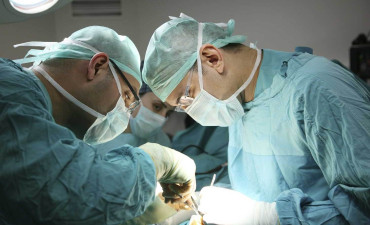Hospital-Acquired Infections and Sepsis May Be Medical Malpractice

When you seek medical treatment, the last thing you think is that it might make things worse. Unfortunately, it is a scenario that happens when a patient contracts an infection in the hospital and it goes untreated for too long. Sepsis and septic shock can occur, and it can be extremely serious, even fatal. It is the responsibility of the hospital and medical staff to adhere to strict practices regarding cleanliness and sterility. When they don’t, and a patient acquires an infection that is unrelated to the medical issue they are being treated for, the hospital (or medical professionals) may be at fault, and the patient may have grounds for a medical malpractice lawsuit.
What is Hospital-Acquired Infection and How Does It Happen?
Hospital-acquired infection (HAI) is an infection that a hospital patient contracts that is not related to the patient’s diagnosis or medical condition upon admittance to the hospital. It is likely that an infection that happens 48 hours after admittance is an HAI. Because there is a variety of bacteria found in the hospital setting and patients often have a reduced immune capacity, the likelihood of contracting an infection is higher in some clinical areas and scenarios.
Typically, there are three ways in which a patient contracts an HAI. These are considered risk factors, and are as follows:
- Patient – These risk factors include the seriousness of the patient’s injury or illness, the length of the patient’s stay, and how well the patient’s immune system is functioning while they are in the hospital.
- Organizational – Organizational risk factors include the overall cleanliness of the hospital. They include such things as: the filtration of the air conditioning and heating system, the cleanliness of water systems, building surfaces, and the sterility of medical equipment and devices.
- Latrogenic – These risk factors are associated with the care with which the doctors, nurses and other hospital staff perform. Latrogenic risk factors include how often medical personnel wash their hands, use of antibiotics, and care used in invasive procedures like the administration of intravenous medication, intubation, and catheterization.
Sepsis: Symptoms and Risks
Sepsis occurs when the patient’s body responds to an infection in such a way that it injures its own tissues and organs. It sometimes leads to septic shock and organs can begin shutting down in just a few hours. It is extremely dangerous, so every minute counts in diagnosis and treatment. It’s estimated that between 28 and 50 percent of patients who suffer sepsis do not survive, making it the number one killer of hospital patients.
While there aren’t any simple diagnostic tests for sepsis, there are symptoms and warning signs in patients that medical staff can recognize if they are paying close enough attention. The failure to recognize and respond to signs of sepsis may be considered medical malpractice.
Symptoms of sepsis include general, all-over inflammation, increased heart and respiratory rates, fever, and elevated white blood cell count. If the HAI goes undetected and untreated, there is a significant potential for serious injury – up to and including death.
Liability for Sepsis, Septic Shock, or Death
Establishing liability for injuries or death related to sepsis or septic shock can be challenging legally. It requires investigation into the specific circumstances surrounding the patient and the infection that was acquired. How the infection was contracted, why it wasn’t treated in a timely manner, and whether it was preventable, all have to be determined. It isn’t always obvious who or what is responsible for the patient’s infection. If it is established that it was likely the fault of the doctor, the hospital may not be liable if the doctor is an independent contractor, in which case the doctor may be held responsible.
For a patient (or their family members if a death has occurred) to bring a successful medical malpractice lawsuit, the defendant’s liability must be proven. This is typically done by a qualified medical expert who examines the case and determines whether the proper standard of care was provided to the patient at all times. If it is found that the HAI and sepsis was avoidable, and that it occurred due to negligence on the part of a medical professional, then the lawsuit may be successful.
If you or a loved one acquired sepsis that was not promptly diagnosed, you need to speak to a medical malpractice attorney. At Ross Feller Casey, we have attorneys who are extremely knowledgeable about sepsis and septic shock and are experienced in proving liability and negligence on the part of hospitals and medical providers. The firm has won numerous multi-million recoveries in sepsis lawsuits for our catastrophically injured clients.
Call the offices of Ross Feller Casey for a free consultation with one of our sepsis attorneys to see if you have a case. All of our medical malpractice cases are handled on a contingency basis, so you will not have any fees unless there is a financial recovery.
Disclaimer: Ross Feller Casey, LLP provides legal advice only after an attorney-client relationship is formed. Our website is an introduction to the firm and does not create a relationship between our attorneys and clients. An attorney-client relationship is formed only after a written agreement is signed by the client and the firm. Because every case is unique, the description of awards and summary of cases successfully handled are not intended to imply or guarantee that same success in other cases. Ross Feller Casey, LLP represents catastrophically injured persons and their families in injury and wrongful death cases, providing legal representation in Pennsylvania and New Jersey.





